A sordid saga of Pindi’s perennial peril
How Nullah Leh with once crystal clear water became a bane for the garrison city
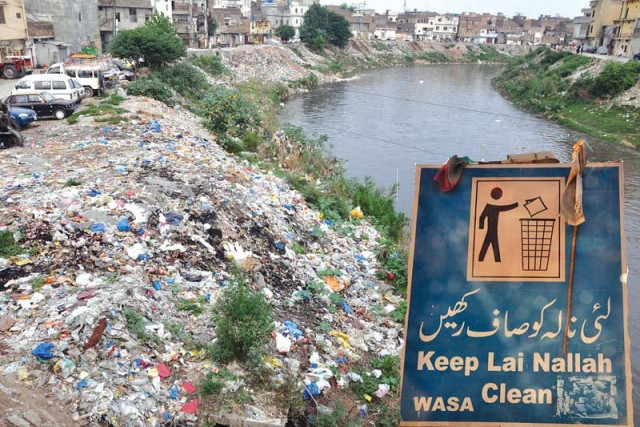
Nullah Leh, the sharp thorn in the garrison city’s eye has earned itself a bad reputation for causing devastating floods every year, but little do Pindiites know who the culprit is when it comes to fixing the responsibility for the constant nuisance it has become.
The Leh stream, commonly known as Nullah Leh, originates from the Margalla Hills in Islamabad and passes through Rawalpindi, posing a recurring threat to the city with its history of devastating floods.
From June 15 to August 15 each year, the stream's potential for flooding causes fear and panic among the approximately 0.5 million residents living in settlements along its banks. These residents often rush to transport their cattle and belongings to safer areas in anticipation of torrential rains and floods.
Historically, Nullah Leh's water was clear, allowing people to perform ablutions and drink from it, while the Hindu community used it for bathing and scattering the ashes of their deceased. A Shamshan Ghat from that era still exists near Liaquat Bagh Chowk, marking the spot where the Hindu Arya family settled, giving rise to the Arya Mohallah.
The stream's first recorded flood occurred in 1894, causing significant damage despite Rawalpindi's then-small population. Subsequent floods, particularly those in 1971, 1975, 1987, 1990, 1995, and 2001, have left lasting scars on the city. The 1971 flood was notably destructive, resulting in 26 deaths, the destruction of 59 houses, and extensive crop damage. The 2001 flood, the most devastating to date, claimed 96 lives, destroyed 310 buildings, and caused widespread destruction in half of the city. Floodwaters reached depths of 5 to 20 feet, wreaking havoc on markets, shops, and infrastructure, with financial losses estimated at around Rs8.45 billion.
Major commercial centres and wholesale markets, including Moti Bazaar, Mochi Bazaar, Raja Bazaar, Truck Bazaar, Dungi Khoi, Fawara Chowk, Bara Bazaar, Kashmiri Bazaar, City Road, Gawalmandi, Liaquat Road, Iqbal Road, Pul Shah Nazaar, Bohar Bazaar, and Mughal Sarai Market, suffered extensive damage.
Over 30,000 shops and warehouses were destroyed, leaving traders with losses amounting to billions of rupees. Many traders faced bankruptcy and continued to struggle to recover. The army was deployed to clean up the affected areas, and it took a week to clear the debris.
Despite big announcements from leaders such as Ex-dictator Ayub Khan, ex-premier Zulfikar Ali Bhutto, General Ziaul Haq, Muhammad Khan Junejo, Benazir Bhutto, Nawaz Sharif, and General Pervez Musharraf, efforts to address the problem of Nullah Leh have largely been empty promises. For 128 years, no government has managed to find a lasting solution to the flooding issue. Proposals to build expressways and sewage tunnels have been repeatedly shelved.
In 2007, General Pervez Musharraf laid the foundation stone for the Leh Expressway, but the project was scrapped by Shahbaz Sharif in 2008. The project's estimated cost, initially Rs17 billion, has now escalated to Rs105 billion, with annual increases of Rs2-3 billion. Although the PTI government revived the project in 2019, it was halted due to lack of funds.
A World Bank-assisted project worth Rs30 crore aimed to build walls along both sides of Nullah Leh to prevent encroachment and waste disposal, but it also stalled due to financial constraints. Leaders of the Central Association of Traders of Rawalpindi, Naveed Kanwal and Tahir Bhatti, highlight the dire impact of monsoon floods on traders, many of whom are still suffering from the devastating 2001 floods. Despite numerous announcements, no financial assistance has been provided to the affected traders or the families of those who lost their lives.
Ghulam Qadir Mir, President of the Sabzi Mandi Association, explains that the arrival of the monsoon season triggers business disruptions, with traders rushing to their markets if it rains at night. Moti Bazaar is particularly vulnerable, with goods worth billions of rupees stored in warehouses. He emphasises the need for immediate government intervention to address the flooding problem.
Former interior minister Sheikh Rashid Ahmed argues that the construction of the Leh Expressway is the only viable solution. The expressway would separate rainwater from sewage, mitigating flood risks. He claims to have secured approval for the project twice, only for it to be scrapped both times due to lack of funds.
District Defense Officer Talib Hussain says a new plan has been set in motion to protect vulnerable populations, with the army's protective force collaborating with the district administration. During the flood season, from June 15 to September 30, 300 rescue workers will be deployed in shifts to safeguard low-lying areas.
WASA MD Saleem Ashraf states that the cleaning of Nullah Leh and 15 other rainwater streams has commenced, with Rs150 crore allocated for the task.
Published in The Express Tribune, June 10th, 2024.



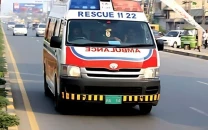
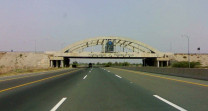
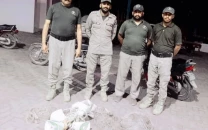
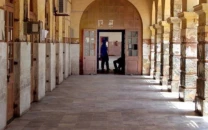












COMMENTS
Comments are moderated and generally will be posted if they are on-topic and not abusive.
For more information, please see our Comments FAQ